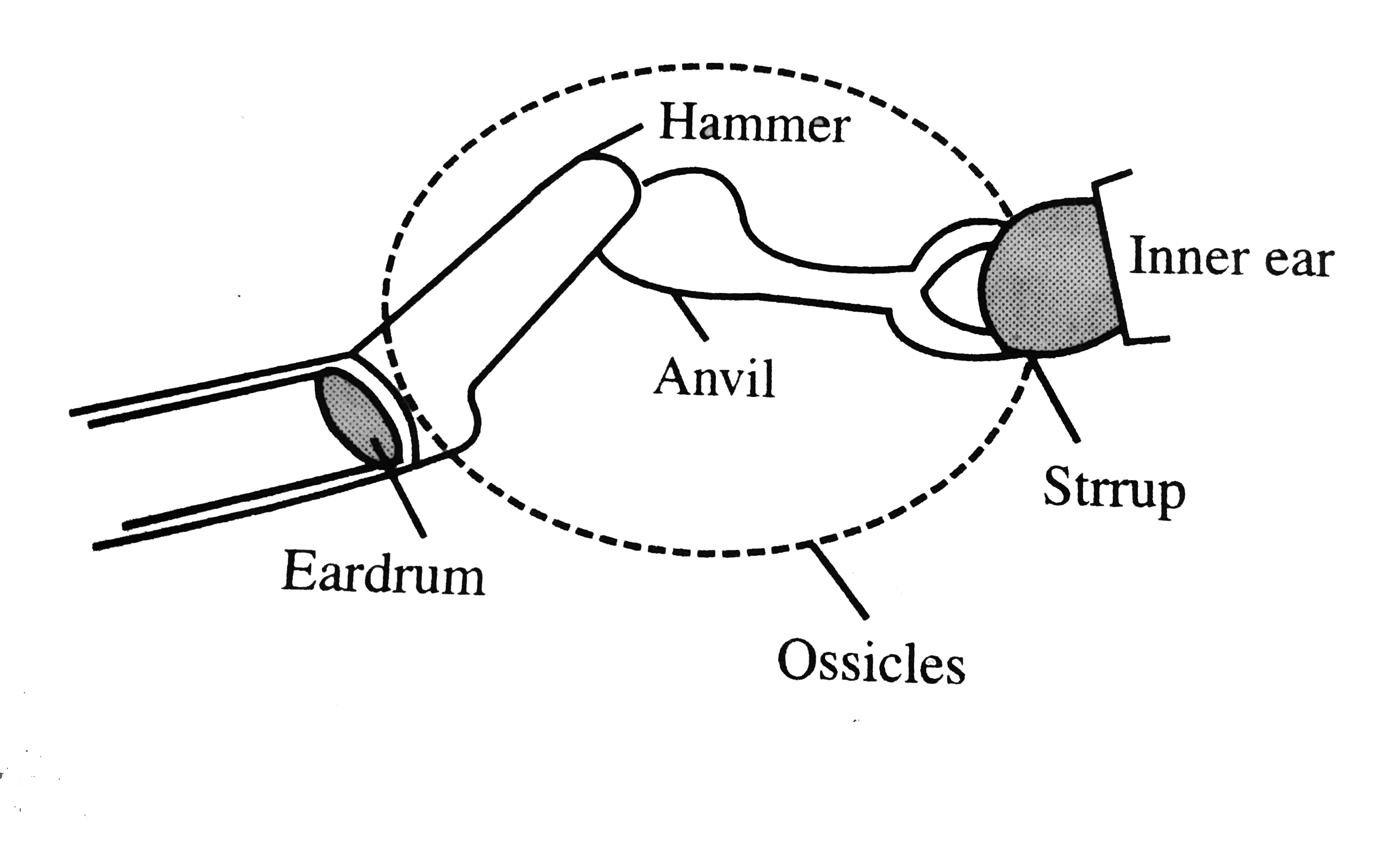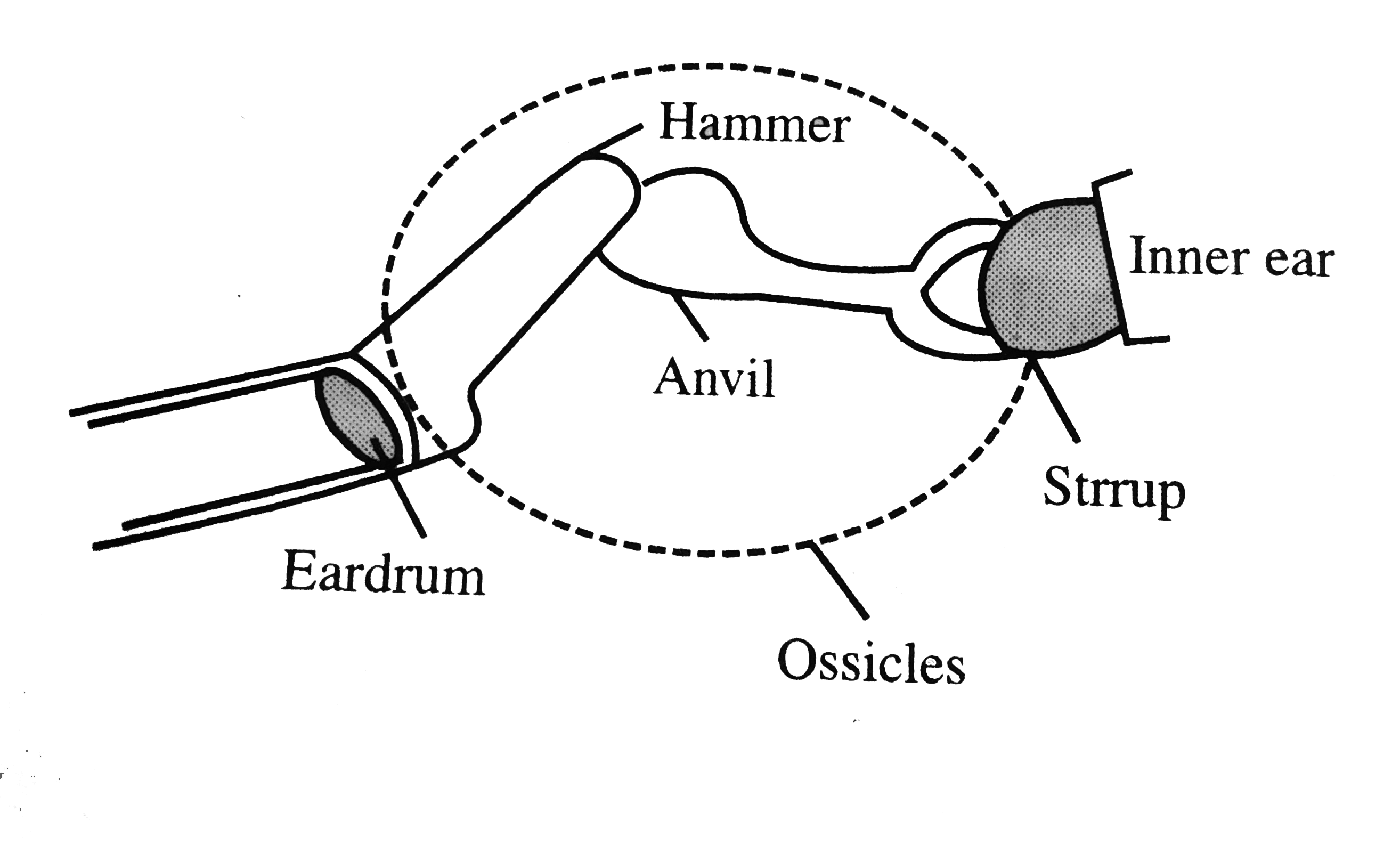A window whose area is 2m2 opens on street where the street noise result in an intensity level at the window of 60 dB. How much acoustic power enters the window via sound waves. Now if an acoustic absorber is fitted at the window, how much energy from street will it collect in 5 h?
Loudness level is given as
L=10log(II0)
Thus,
10log(II0)=60
⇒II0=106
⇒I=(10−12×106)=10−6Wm2=1μWm2
and the power of sound is given by
P=IS
=1×10−6×2=2μW
Thus energy is given by
E=P×t
=2×10−6×5×60×60=36×10−3J
Topper's Solved these Questions
- SOUND WAVES AND DOPPLER EFFECTBook:CENGAGE PHYSICSChapter:SOUND WAVES AND DOPPLER EFFECTExercise:Single Correct
Explore 252 Videos
- SOUND WAVES AND DOPPLER EFFECTBook:CENGAGE PHYSICSChapter:SOUND WAVES AND DOPPLER EFFECTExercise:Multiple Correct
Explore 44 Videos
- SOUND WAVES AND DOPPLER EFFECTBook:CENGAGE PHYSICSChapter:SOUND WAVES AND DOPPLER EFFECTExercise:Exercise 6.2
Explore 72 Videos
- RIGID BODY DYNAMICS 2Book:CENGAGE PHYSICSChapter:RIGID BODY DYNAMICS 2Exercise:Interger
Explore 2 Videos
- SUPERPOSITION AND STANDING WAVESBook:CENGAGE PHYSICSChapter:SUPERPOSITION AND STANDING WAVESExercise:Comprehension Type
Explore 5 Videos
Similar Questions
A window whose area is 2m2 opens on a street where the street noise results at the window an intensity level of 60dB. How much acoustic power energy from the street will it collect in a day?
View SolutionWalls of two buildings on eiterh side of a street are parallel to each other. A ladder 5.8m long is placed on the street such that its top jist reaches the window of a building at the height of 4 m. On turning the ladder over to the other side of the street, its top touches the window of the other building at a height 4.2 m. Find the width of the street.
View Solution
Knowledge Check

When a sound wave enters the ear, it sets the eardrum into oscillation, which in turn causes oscillation of 3 tiny bones in the middle ear called ossicles. This oscillation is finally transmitted to the fluid filled in inner portion of the ear termed as inner ear, the motion of the fluid disturbs hair cells within the inner ear which transmit nerve impulses to the brain with the information that a sound is present. The theree bones present in the middle ear are named as hammer, anvil and stirrup. Out of these the stirrup is the smallest one and this only connects the middle ear to inner ear as shown in the figure below. The area of stirrup and its extent of connection with the inner ear limits the sensitivity of the human ear consider a person's ear whose moving part of the eardrum has an area of about 50mm2 and the area of stirrup is about 5mm2. The mass of ossicles is negligible. As a result, force exerted by sound wave in air on eardum and ossicles is same as the force exerted by ossicles on the inner ear. Consider a sound wave having maximum pressure fluctuation of 4×10−2Pa from its normal equilibrium pressure value which is equal to 105Pa. Frequency of sound wave in air is 332ms. Velocity of sound wave in fluid (present in inner ear) is 1500ms. Bulk modulus of air is 1.42×105Pa. Bulk modulus of fluid is 2.18×109Pa.
Q. This person (without hearing aid machine) is sitting inside a busy restaurant where average sound intensity is 3.2×10−5Wm2. How much energy in the form of sound is taken up by the person in his meal time of 1 h?A1.2×10−5JB1.8×10−4JC2.4×10−5JD3.6×10−4JThe only electron in the hydrogen atom resides under ordinary conditions on the first orbit. When energy is supplied, the electron moves to higher energy orbit depending on the amount of energy absorbed. When this electron returns to any of the lower orbits, it emits energy. Lyman series is formed when the electron returns to the lowest orbit while Balmer series is formed when the electron returns to second orbit. Similarly, Paschen, Brackett and Pfund series are formed when electron returns to the third, fourth and fifth orbits from higher energy orbits respectively.
Maximum number of lines produced when an electron jumps from nth level to ground level is equal to n(n−1)2. For exampe, in the case of n=4, number of lines produced is 6(4→3,4t2,4→1,3→2,3→1,2→1). When an electron returns from n2 and n1 state, the number of lines in the spectrum will be equal to
(n2−n1)(n2−n1+12
If the electron comes back from energy level having energy E2 to energy level having energy E1, then the difference may be expressed in terms of energy of photon as :
E2−E1=ΔE,λ=hcΔE
Since h and c are constants, ΔE corresponds to definite energy, thus each transition from one energy level to another will produce a light of definitewavelength. This is actually observed as a line in the spectrum of hydrogen atom.
Wave number of line is given by the formula
→v=R(1n21−1n22), where R is a Rydberg's constant (R=1.1×107m−1)
In a collection of H–atom, electrons make transition from 5th excited state to 2nd excited state then maximum number of different types of photons observed are :A3B4C6D15The only electron in the hydrogen atom resides under ordinary conditions on the first orbit. When energy is supplied, the electron moves to higher energy orbit depending on the amount of energy absorbed. When this electron returns to any of the lower orbits, it emits energy. Lyman series is formed when the electron returns to the lowest orbit while Balmer series is formed when the electron returns to second orbit. Similarly, Paschen, Brackett and Pfund series are formed when electron returns to the third, fourth and fifth orbits from higher energy orbits respectively.
Maximum number of lines produced when an electron jumps from nth level to ground level is equal to n(n−1)2. For exampe, in the case of n=4, number of lines produced is 6(4→3,4t2,4→1,3→2,3→1,2→1). When an electron returns from n2 and n1 state, the number of lines in the spectrum will be equal to
(n2−n1)(n2−n1+12
If the electron comes back from energy level having energy E2 to energy level having energy E1, then the difference may be expressed in terms of energy of photon as :
E2−E1=ΔE,λ=hcΔE
Since h and c are constants, ΔE corresponds to definite energy, thus each transition from one energy level to another will produce a light of definitewavelength. This is actually observed as a line in the spectrum of hydrogen atom.
Wave number of line is given by the formula
→v=R(1n21−1n22), where R is a Rydberg's constant (R=1.1×107m−1)
The wave number of electromagnetic radiation emitted during the transition of electron in between two levels of Li2+ ion whose principal quantum numbers sum is 4 and difference is 2 is:A3.5RB4RC8 RD8/9R
Walls of two buildings on either side of a street are parallel to each othe. A ladder 5.8m long is placed on the street such that its top just reaches the window of a building at the height of 4m. On turning the ladder over to the other side of the street, its top touches the window of the other building at a height 4.2m. Find the width of the street.
View Solution(a) What is the intensity of a 60dB sound ? (b) If the sound level is 60dB close to a speaker that has an area of 120cm2 . What is the acoustic power output of the speaker?
View SolutionA microphone of cross sectional area 0.80cm2is placed in front of a small speaker emitting 3.0 W of sound output. If the distance between the microphone and the speaker is 2.0 m how much energy falls on the microphone in 5.0 s?
View SolutionA hole of area 1mm2 opens near the bottm of a large- water storage tank, and a stream of water shoots from it. If the top of water in the tank is to be kept at 20 m above the point of leak , how much water in litres//s should be added to the reservoir tank to keep this level ? (g=10m/s2).
View Solution
When a sound wave enters the ear, it sets the eardrum into oscillation, which in turn causes oscillation of 3 tiny bones in the middle ear called ossicles. This oscillation is finally transmitted to the fluid filled in inner portion of the ear termed as inner ear, the motion of the fluid disturbs hair cells within the inner ear which transmit nerve impulses to the brain with the information that a sound is present. The theree bones present in the middle ear are named as hammer, anvil and stirrup. Out of these the stirrup is the smallest one and this only connects the middle ear to inner ear as shown in the figure below. The area of stirrup and its extent of connection with the inner ear limits the sensitivity of the human ear consider a person's ear whose moving part of the eardrum has an area of about 50mm2 and the area of stirrup is about 5mm2. The mass of ossicles is negligible. As a result, force exerted by sound wave in air on eardum and ossicles is same as the force exerted by ossicles on the inner ear. Consider a sound wave having maximum pressure fluctuation of 4×10−2Pa from its normal equilibrium pressure value which is equal to 105Pa. Frequency of sound wave in air is 332ms. Velocity of sound wave in fluid (present in inner ear) is 1500ms. Bulk modulus of air is 1.42×105Pa. Bulk modulus of fluid is 2.18×109Pa.
Q. If the person is using an hearing aid, which increase the intensity of given sound wave change as perceived by inner ear?
View Solution

